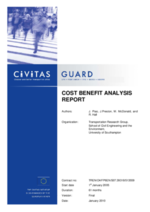Developing a clean-bus fleet
Summary
Suceava’s goal was to create a modern, efficient, reliable public transport fleet, capable of meeting the needs of existing passengers and attracting new customers.
Implementing sustainable mobility
In a medium-sized city such as Suceava, the existing road infrastructure is unable to cope with the rise in car ownership and the higher mobility demands created by local economic development, falling unemployment and increased levels of disposable income. Lack of space in the city centre therefore results in congestion and related traffic problems. An outdated public transport fleet, comprising buses that did not conform to any Euro emissions standards, was compounding the air quality problems, and the number of people using public transport in Suceava was relatively low.
The measure was designed to attract more people to use public transport and to reduce harmful emissions by modernising the bus fleet to run on alternative fuels. The aim was to ensure that the entire public transport fleet conforms to Euro 3 emissions standards, that at least 40 percent of buses are fuelled with liquefied petroleum gas (LPG), and that 20 percent of the public transport company’s minibuses are equipped with filter particulate trap (FPT) systems.
The concept of eco-routes was also introduced, referring to an area within which the level of noise and emissions from public trasnsport is considerably reduced in order to improve quality of life for all inhabitants.
Progress
The activities implemented in Suceava towards creating a sustainable transport service were based on the experiences of other cities and regions across Europe that have well-developed traffic systems.
The city’s public transport fleet was modernised through the purchase of 30 new IRISBUS IVECO buses, running according to an updated timetable on eight new routes from which all old buses were removed. A total of 15 buses were converted to use LPG, one of them equipped with a conversion system produced on the Romanian market, for the purposes of promotion. The LPG buses were marked with stickers and the routes designated as eco-routes were indicated with clear signposting. Bus drivers received training on eco-driving and good customer service. Secondary, narrower routes were identified and subcontracted to a private company operating minibuses. The refurbished bus fleet was promoted via a wide range of publicity activities.
Outcomes
- The modernisation of the urban public transport led to a rise in passenger numbers of 757 percent.
- Some 82 percent of interviewees were aware of the alternative fleet and alternative fuel.
- As a result of fleet renewal and the conversion of half the fleet to LPG rather than diesel, emissions of pollutants fell: carbon dioxide by 11 percent/year; carbon monoxide by 3 percent/year; nitrogen oxides by 15 percent/year; and particulates by 49 percent/year.
- Energy consumption for the new LPG buses improved compared to the new diesel buses.
- Conditions were created for the development of the alternative fuel market and for setting up biogas facilities.









